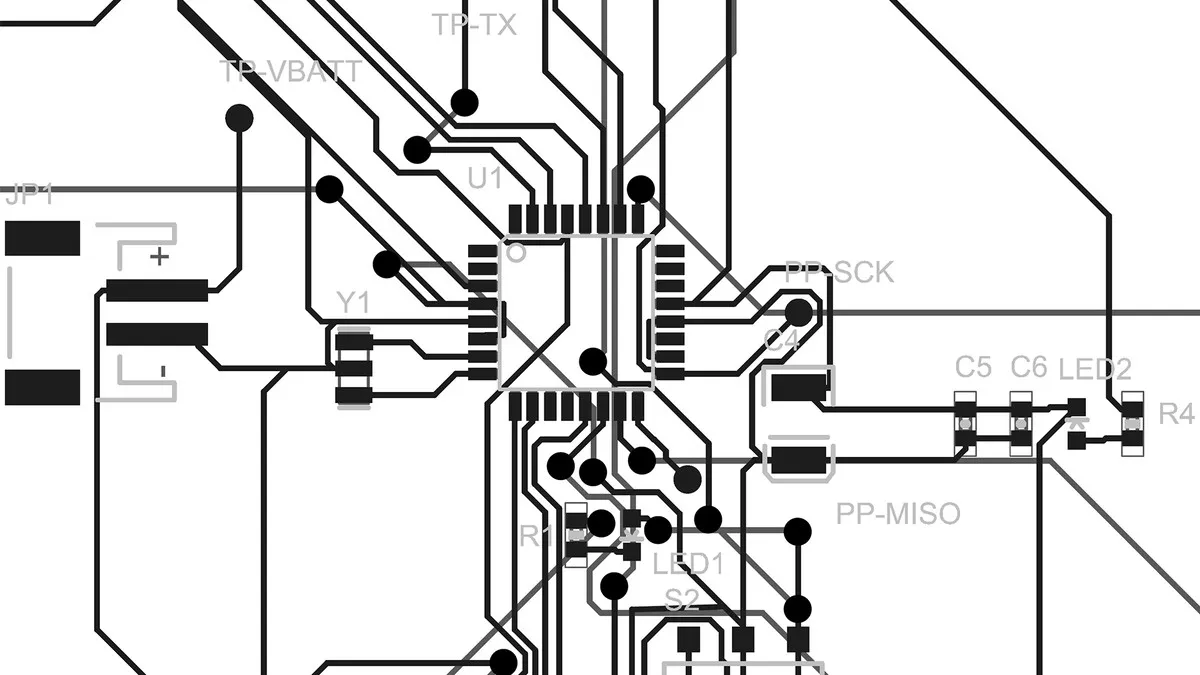
Learning Solidworks PCB 
Solidworks PCB is a powerful design package that enables users to create PCB schematics and board layouts, as well as integrate electronics into mechanical CAD projects. This tutorial provides an introduction to the features and capabilities of Solidworks PCB, helping users get started with the software. ▼
ADVERTISEMENT
Course Feature
![]() Cost:
Cost:
Free Trial
![]() Provider:
Provider:
LinkedIn Learning
![]() Certificate:
Certificate:
No Information
![]() Language:
Language:
English
![]() Start Date:
Start Date:
Self Paced
Course Overview
❗The content presented here is sourced directly from LinkedIn Learning platform. For comprehensive course details, including enrollment information, simply click on the 'Go to class' link on our website.
Updated in [March 06th, 2023]
Justin Flett provides an overview of Solidworks PCB in this course. He explains how to customize the user interface and navigation tools to suit individual preferences. He then demonstrates how to create a PCB design project, including generating PCB schematics and board layouts. Additionally, Justin shows how to integrate electronics within mechanical CAD projects. By the end of the course, viewers will have a better understanding of the fundamentals of this powerful software.
[Applications]
It is suggested that those who have completed this course apply their knowledge of Solidworks PCB to create their own PCB designs. They should also be able to integrate their PCB designs into mechanical CAD projects. Additionally, they should be able to customize the user interface and navigation tools to suit their own preferences.
[Career Paths]
1. PCB Design Engineer: PCB Design Engineers are responsible for designing and developing printed circuit boards (PCBs) for a variety of electronic products. They use Solidworks PCB to create schematics, board layouts, and other design elements. As the demand for more complex and sophisticated electronic products increases, the need for experienced PCB Design Engineers is expected to grow.
2. Electronics Technician: Electronics Technicians use Solidworks PCB to troubleshoot and repair electronic components and systems. They are responsible for testing and diagnosing problems, as well as replacing faulty components. As the demand for more complex and sophisticated electronic products increases, the need for experienced Electronics Technicians is expected to grow.
3. Mechanical CAD Designer: Mechanical CAD Designers use Solidworks PCB to create 3D models of mechanical components and systems. They are responsible for designing and developing mechanical components and systems for a variety of products. As the demand for more complex and sophisticated electronic products increases, the need for experienced Mechanical CAD Designers is expected to grow.
4. Robotics Engineer: Robotics Engineers use Solidworks PCB to design and develop robotic systems for a variety of applications. They are responsible for creating the software and hardware components of robotic systems, as well as programming and testing them. As the demand for more complex and sophisticated robotic systems increases, the need for experienced Robotics Engineers is expected to grow.
[Education Paths]
1. Electrical Engineering: Electrical engineering is a field of engineering that deals with the study and application of electricity, electronics, and electromagnetism. It is a rapidly growing field, with new technologies and applications being developed every day. Electrical engineers are responsible for designing, developing, testing, and supervising the manufacture of electrical equipment, such as motors, generators, navigation systems, and communication systems.
2. Computer Engineering: Computer engineering is a field of engineering that combines the principles of computer science and electrical engineering. It focuses on the design, development, and implementation of computer systems and software. Computer engineers are responsible for designing, developing, and testing computer hardware and software, as well as developing new technologies and applications.
3. Robotics Engineering: Robotics engineering is a field of engineering that focuses on the design, development, and implementation of robots and robotic systems. Robotics engineers are responsible for designing, developing, and testing robots and robotic systems, as well as developing new technologies and applications.
4. Mechatronics Engineering: Mechatronics engineering is a field of engineering that combines the principles of mechanical engineering, electrical engineering, and computer engineering. It focuses on the design, development, and implementation of mechatronic systems, which are systems that combine mechanical, electrical, and computer components. Mechatronics engineers are responsible for designing, developing, and testing mechatronic systems, as well as developing new technologies and applications.
Course Syllabus
Introduction
What you should know
Course Provider

Provider LinkedIn Learning's Stats at AZClass
Solidworks PCB is a powerful design package that enables users to create PCB schematics and board layouts, and integrate electronics into mechanical CAD projects. This tutorial introduces the features and functionality of Solidworks PCB and helps users get started with the software. Learners gain learning value by understanding Solidworks PCB's user interface and navigation tools. Instructor Justin Flett demonstrates how to customize the user interface and navigation tools to suit personal preferences. This will enable learners to use the software more efficiently and navigate the software faster and easier.
Discussion and Reviews
0.0 (Based on 0 reviews)
Explore Similar Online Courses

Embedding Sensors and Motors

Data Wrangling in R : 2017

Python for Informatics: Exploring Information

Social Network Analysis

Introduction to Systematic Review and Meta-Analysis

The Analytics Edge

DCO042 - Python For Informatics

Causal Diagrams: Draw Your Assumptions Before Your Conclusions

Whole genome sequencing of bacterial genomes - tools and applications

Solidworks Essentials

SOLIDWORKS Course: Turn 2D Sketches into 3D Models


Start your review of Learning Solidworks PCB